Planning worship?
Check out our sister site, ZeteoSearch.org,
for 20+ additional resources related to your search.
- |
User Links
Person Results
‹ Return to hymnal

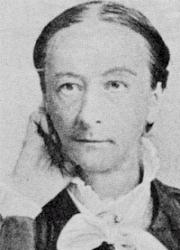
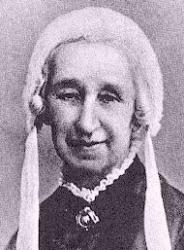
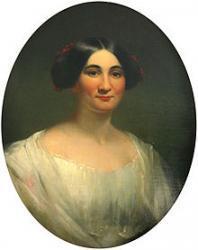
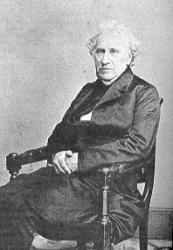
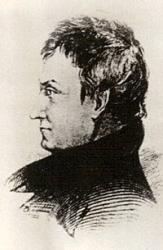
Export as CSV
A. Cleveland Coxe

1818 - 1896 Hymnal Number: d19 Author of "Carol, carol, Christians" in Hymns for the Use of the Sunday School of Trinity Methodist Episcopal Church, Jersey City Coxe, Arthur Cleveland, D.D. LL.D. One of the most distinguished of American prelates, and son of an eminent Presbyterian minister, the Rev. Samuel H. Cox, D.D., was born at Mendham, New Jersey, May 10,1818. Graduating at the University of New York in 1838, and taking Holy Orders in 1841, he became Rector of St. John's, Hartford, Connecticut, in the following year. In 1851 he visited England, and on his return was elected Rector of Grace Church, Baltimore, 1854, and Calvary, New York, 1863. His consecration as Bishop of the Western Diocese of New York took place in 1865. His residence is at Buffalo. Bishop Coxe is the author of numerous works. His poetical works were mostly written in early life, and include Advent, 1837; Athanasion, &c, 1842; Christian Ballads, 1840 (Preface to the English edition, April, 1848); Hallowe'en and Other Poems, 1844; Saul, a Mystery, 1845, &c. Some of Bishop Coxe's hymns are found in the collections of every religious body in America, except the official collections of his own. This is accounted for by his too scrupulous modesty. As a member of the Hymnal Committee, in 1869-71, he refused to permit the insertion of his own lyrics. As he has not preserved memoranda, and has no precise recollection of dates, several dates here given are somewhat uncertain.
1. Behold an Israelite indeed. St. Bartholomew. First appeared in "Poems," published with his Christian Ballads, 1840, and found in an altered form in the People's H. and the Hymnary.
2. Body of Jesus, 0 sweet Food. Holy Communion. Written at St. James's College, Maryland (since broken up by the Civil War), Ascension Day, 1858. It was first printed for private use, and then published in the Cantate Domino, Boston, 1859, No. 53, and again in other American collections. It is also in Schaff’s Christ in Song, 1869, and in The Churchman's Altar Manual, 2nd ed., 1883.
3. Breath of the Lord, 0 Spirit blest.Whitsuntide. Bishop Coxe considers this more worthy of being called a hymn than anything else from his pen. It was written long before it appeared in the New York Independent, Whitsuntide, 1878. It is in the Schaff-Gilman Library of Religious Poetry, 1881, and Brooke's Churchman's Manual of Private and Family Devotion, 1883.
4. Christ is arisen. Easter. This is suggested by, and partly translated from, the famous Easter Chorus in Goethe's Faust, "Christ ist erstanden" (see Goethe), and appeared in Hallowe'en, 1844.
5. He who for Christ hath left behind. St. Matthew. From his Christian Ballads, &c, 1840.
6. In the silent midnight watches. Christ knocking. From his Athanasion, &c, 1842; an impressive moral poem rather than a hymn on Christ knocking at the door, extensively used in America, and sometimes in England. Original text, Schaff's Christ in Song, 1869.
7. Lord, when Thou didst come from heaven. A hymn for Epiphany, on behalf of Western Missions, appeared among the "Lays "appended to Hallowe'en, 1844, and again in later editions of the Christian Ballad. It is sometimes abbreviated, as in Lyra Sac. Amer., " Westward, Lord, the world alluring."
8. Now pray we for our country. National Hymn. A stanza from Chronicles, or meditations on events in the history of England, called up by visiting her abbeys and cathedrals, and appeared in Christian Ballads, 1840. Originally it began, "Now pray we for our mother," and, with the succeeding stanza, was a call upon Americans to pray for their mother country. It is adopted by Dr. Martineau in his Hys., 1873.
9. 0 walk with God, and thou shalt find. Holiness. Appeared in his Hallowe’en, &c, 1844, and is found in Lyra Sac. Amer.
10. 0 where are kings and empires now! Church of God. The 6th stanza of his ballad "Chelsea," which appeared in the Churchman, 1839, and again in his Christian Ballads, 1840.
11. Saviour, sprinkle many nations. Missions. “Begun on Good Friday, 1850, and completed 1851, in the grounds of Magdalen College, Oxford." 1st published. in Verses for 1851, in Commemoration of the third Jubilee of the Society for the Propagation of the Gospel, edited by the Rev. Ernest Hawkins, 1851. It was subsequently appended to the English edition of his Christian Ballads. It is regarded as Bishop Coxe's best piece, and to many minds it is the loveliest of missionary hymns. Its use in England is very extensive. It is not found in the American Episcopal hymnal for the reason given above.
12. Still as our day our strength shall be. Temptation. Appeared in his Hallowe'en, &c, 1844, and Lyra Sac. Amer.
13. Soldier, to the contest pressing. Christian Conflict. From his Hallowe'en, &c, 1844, and Lyra Sac. Amer. It was written in 1834.
14. There is a land like Eden fair. From Hallowe'en, &c, into a few collections.
15. We are living, we are dwelling. Christian Soldiers. An impressive moral poem rather than a hymn, but extensively used. It appeared in his Athanasion, &c, 1840, and Lyra &xc.
16. Who is this, with garments gory. Passiontide. From his “Lays" appended to Hallowe'en, 1844, and again in his Christian Ballads. It is found in the Child's Christian Year, 4th ed. N.D., the People's Hymns, and other collections. It is in 4 stanza of 8 1. The last stanza is sometimes given as a separate hymn:—"Hail, all hail, Thou Lord of Glory."
17. When o'er Judea's vales and hills. Written cir. 1840, and published in his Hallowe'en, &c, 1844, and again, with the author's final corrections, made in 1869, in Schaff's Christ in Song (1870 ed. p. 112). Also in the English edition of his Christian Ballads. From this "Hymn to the Redeemer," two shorter hymns have been com¬piled : (1) " How beauteous were the marks divine." This is in almost universal American and occasional English use. (2) "O who like Thee, so calm, so bright," in the Hymnary, 1872.
Bishop Coxe has also translated the Pange lingua gloriosi corporis (q. v.), and is the author of the beautiful Christmas Carol, "Carol, carol, Christians," given in his Christian Ballads, &c. [Rev. F. M. Bird]
-- John Julian, Dictionary of Hymnology (1907)
A. Cleveland Coxe
Susan Warner

1819 - 1885 Hymnal Number: d67 Author of "Jesus bids us shine with a pure, clear [clear, pure] light" in Hymns for the Use of the Sunday School of Trinity Methodist Episcopal Church, Jersey City
Susan Warner
John A. Granade
1763 - 1807 Hymnal Number: d102 Author of "I am glad I'm in this army" in Hymns for the Use of the Sunday School of Trinity Methodist Episcopal Church, Jersey City Born: 1770, New Bern County, North Carolina.
Died: December 6, 1807, Sumner County, Tennessee.
After a period of desperate depression, Granade came to Christ in 1800 at a Presbyterian camp meeting at Desha’s Creek, Sumner County, Tennessee. Ordained a Methodist circuit riding preacher, Granade was referred to by the Nashville Banner as the "wild man of Goose Creek" (Sumner County, Tennessee) and was also variously known as "the poet of the backwoods" and "the Wild Man of Holston." Granade worked in part in the world of shape-note singing in the Shenandoah Valley, where a variety of musical sources, both sacred and profane, were at play. His works include:
Pilgrim’s Songster (Lexington, Kentucky: 1804)
--www.hymntime.com/tch/
=========================
Granade, John Adam (ca. 1763--1807, Wilson County, Tennessee). A Methodist circuit rider, admitted at a session of the Western Conference, 1 October 1801 at Ebenezer, Tenn. For three years he rode the Green, Holston, and Hinckstone circuits. He then settled in southwest Tennessee as a physician-farmer.
He had a number of campmeeting hymns in Thomas Hinde's Pilgrim Songster (Cincinnati, 1810) whose preface states: " . . . our two western bards Mr. John A. Granade and Caleb J. Taylor, composed their songs during the great revivals of religion in the states of Kentucky and Tennessee about 1802-1804."
--Leonard Ellinwood, DNAH Archives
John A. Granade
Jemima Luke

1813 - 1906 Hymnal Number: d56 Author of "I think, when I read that [the] sweet story of old" in Hymns for the Use of the Sunday School of Trinity Methodist Episcopal Church, Jersey City Luke, Jemima Thompson, the wife of Rev. Samuel Luke, an Independent minister of England, was the daughter of Thomas 422 Thompson, a philanthropist, and was born at Colebrook Terrace, Islington, August 19, 1813. When only thirteen years of age she began writing for the Juvenile Magazine. She published a volume titled The Female Jesuit in 1851 and A Memoir of Eliza Ann Harris, of Clifton, in 1859, but her name is known to the Christian world almost wholly through the one hymn found in this volume. Mrs. Luke died February 2, 1906.
I think when I read that sweet 682
Hymn Writers of the Church, 1915, Charles Nutter
===============
Luke, Jemima, née Thompson, daughter of Thomas Thompson, sometime of Bath, was born at Colebrooke Terrace, Islington, Aug. 19, 1813, and was married to the late Samuel Luke, a Congregational Minister, in 1843. She was an anonymous contributor to The Juvenile Magazine at the age of 13, and subsequently pub. several works, including The Female Jesuit, 1851; A Memoir of Eliza Ann Harris, of Clifton, 1859, &c. Mrs. Luke is known to hymnody through her hymn:—
I think when I read that sweet story of old. [The Love of Jesus.] It is recorded that this hymn was composed in a stage coach in 1841, and was designed for use in the village school, near her father's seat, Poundsford Park. It was published anonymously in the Leeds Hymn Book, 1853, No. 874, in 3 stanzas of 8 lines, and has since come into use through children's hymn-books in most English-speaking countries.
--John Julian, Dictionary of Hymnology (1907)
Jemima Luke
Phoebe Cary

1824 - 1871 Hymnal Number: d122 Author of "One [A] sweetly [sweet] solemn thought comes to me o'er and o'er" in Hymns for the Use of the Sunday School of Trinity Methodist Episcopal Church, Jersey City Phoebe Cary, (1824-1871) was born and raised in Mount Healthy in Hamilton County, Ohio. Her family came from Lyme, New Hampshire to Ohio when her grandfather was given land in return for his service in the Continental Army. She was the younger sister of Alice Cary (1820-1871). She and Alice submitted poetry to religious periodicals. Phoebe remained in Ohio and continued to write many hymns, including, "One sweetly solemn thought."
Mary Louise VanDyke
===========================================
Cary, Phoebe, sister of Alice Cary, born near Cincinnati, Ohio, Sept. 4, 1824, and died within six months of the death of the same sister at Newport, July 31, 1871. Her works include Poems and Parodies, 1854; and Poems of Faith, Hope and Love, 1868. With Dr. Charles F. Deems she compiled Hymns for all Christians, 1869. Her hymns are:—
1. One sweetly solemn thought. Anticipation of Heaven. This piece was not intended for public use, nor is it a suitable metre for musical treatment, yet it has won universal acceptance and popularity. In some instances this has been attained by change of metre as in the Supplement to the Baptist Psalms & Hymns 1880, No. 1185. Johnson's Encyclopedia is in error in saying it was "written at the age of 17." The Congregational Quarterly for Oct., 1874, says, "it was written, she tells us, in the little back third story bedroom, one Sabbath morning in 1852, on her return from church." This statement shows that it was composed when she was 28, and not 17. The popularity of the hymn in Great Britain arose mainly through its use in the Evangelistic services of Messrs. Moody and Sankey. In the Protestant Episcopal Hymns for Church and Home, Phila., 1860, No. 383, it is given as "A sweetly solemn thought."
The following additional pieces by this author are in the Lyra Sacra Americana, 1868:—
2. Go and sow beside all waters. Seed Sowing.
3. Great waves of plenty rolling up. Gratitude.
4. I had drunk, with lips unsated. Living Waters.
[Rev. F. M. Bird, M.A.]
--John Julian, Dictionary of Hymnology (1907)
Phoebe Cary
William Augustus Muhlenberg

1796 - 1877 Person Name: William A. Muhlenberg Hymnal Number: d191 Author of "Shout the glad tidings" in Hymns for the Use of the Sunday School of Trinity Methodist Episcopal Church, Jersey City Mühlenberg, William Augustus, D.D., son of the Rev. Dr. Mühlenberg, and grandson of Henry Melchior Mühlenberg, the patriarch of Lutheranism in America, was born in Philadelphia Sept. 16, 1796. He graduated at the University of Pennsylvania in 1814. Entering Holy Orders in 1817, he was successively Assistant Rector of St. James's Lancaster, 1823; Rector of the Church of the Holy Communion, New York, 1843; St. Paul's College, Flushing (1828); St. Luke's Hospital, New York (1855); St. John's and Long Island (1865), were established by him. He died April 6, 1877. His poetical gift was genuine, but not largely used. In 1826 he contributed four hymns to the Prayer Book Collection (of which he was one of the Committee). His Poems appeared in 1859. He had previously published Church Poetry, 1823; and The People's Psalter, 1858. I would not live alway followed in 1859 (revised in 1871). This last contains 26 pieces, the hymns in the Prayer Book Collection, 1826, with the exception of "I would not live alway," being omitted. The following are his principal lyrics:—
1. Carol, brothers, carol. Christmas Carol. "Made for the boys of St. Paul's College—-the Chorus adapted from one of the Rev.[Bishop] A.C. Coxe's Christian Ballads"-—in 1840.
2. How short the race our friend has run. Death of a Young Person. Contributed to the Prayer Book Collection, 1826.
3. I would not live alway. Eternal rest desired. Four texts of this poem are extant: 1st the Original; 2nd the version given in the Prayer Book Collection, 1826; 3rd the author's revised version of 1859; and 4th his rewritten text of 1871, the second of these being that known to the hymnbooks. The history of the poem is somewhat complicated. We quote it here as given by us in the History of the American Episcopal Church, 1885, p.637, as we have nothing further to add thereto:-—
"The most famous of these (Dr. Mühlenberg's hymns) was probably first written. 'I will not live alway' has an intricate history, which was not simplified by the author's lapse of memory in his later years. In his brief ‘story of the hymn,' printed with its ‘evangelized’ text in 1871, every date is wrong by two or three years; and his assertion, ‘The legend that it was written on an occasion of private grief is a fancy,' hardly agrees with the clear and minute recollections of persons of the highest character, still living, and who knew the circumstances thoroughly. The date of composition assigned, 1824, is probably (not certainly) correct; it was written at Lancaster, in a lady's album, and began:—
I would not live alway; no, no, holy man,
Not a day, not an hour, should lengthen my span.'
In this shape it seems to have had six eight-line stanzas. The album was still extant in 1876, at Pottstown, Pa., and professed to contain the original manuscript. Said the owner's sister, ‘It was au impromptu. He had no copy, and, wanting it for some occasion, he sent for the album.' In 1826 he entrusted his copy to a friend, who called on him on the way from Harrisburg to Philadelphia, to carry to the Episcopal Recorder, and in that paper it appeared June 3, 1826 (not 1824). For these facts we have the detailed statement of Dr. John B. Clemson, of Claymont, Del., the Ambassador mentioned, who also chances to have preserved that volume of the paper. Thus appearing (without name) it was adopted by the sub-committee [of the Prayer Book Collection, 1826]. When their report was presented to the entire committee in 1826—-not 1829, as Dr. Mühlenberg had it—-'each of the hymns was passed upon. When this came up one of the members remarked that it was very sweet and pretty, but rather sentimental, upon which it was unanimously thrown out. Not suspected as the author, I voted against myself. That, I supposed, was the end of it.’ The committee, which sat until late at night at the house of Bishop White, agreed upon their report to the Convention, and adjourned. But the next morning Dr. Onderdonk (who was not one of their number, but who, on invitation, had acted with the sub-committee, which in fact consisted of him and myself), called on me to inquire what had been done. Upon my telling him that among the rejected hymns was this one of mine, he said, 'That will never do,' and went about among the members of the committee soliciting them to restore the hymn in their report, which accordingly they did; so that to him is due the credit of giving it to the Church.' As thus adopted it was a small and altered selection from the original lines, made by Dr. Onderdonk ‘with some revision' by the author. He was never satisfied with these texts, but revised the poem in 1859, and re¬wrote it in 1871….The authorship of this, as of many another popular lyric, has been disputed. The claim of Henry Ward, a printer of Lichfield, Conn., has been vehemently urged, and revived but a few years ago. Of course it is unsupported by adequate evidence. When Dr. Mühlenberg was asked to assure ‘some of his brethren, editors of Church papers,' of his paternity, his manly reply was, ‘If they thought I was capable of letting the work of another pass for so many years as my own, they would not be sure of anything I might say.'"
4. Jesus' Name shall ever be. The Holy Name, Jesus. This is entitled "The Blessed Name of Jesus. An Evangelical Rosary." It was written in 1842, and revised for Schaff's Christ in Song in Aug., 1868.
5. King of kings, and wilt Thou deign. Submission to Jesus. Appeared in his Poems, 1859.
6. Like Noah's weary dove. The Ark of the Church. Contributed to the Prayer Book Collection, 1826, No. 24, in 5 st. of 4 1. It sometimes begins with st. ii., "0 cease, my wandering soul;" and again with st. in., "Behold the Ark of God."
7. Saviour, Who Thy flock art feeding. Holy Baptism. This is the most widely known of Dr. Mühlenberg's hymns. It was contributed to the Prayer Book Collection, 1826, No. 86, in 4 st. of 4 1. It is sometimes given as "Jesus, Who Thy flock art feeding."
8. Shout the glad tidings, exultingly sing. Christmas. Contributed to the Prayer Book Collection, 1826, No. 46, in 3 st. of 4 1., with the chorus :—
"Shout the glad tidings, exultingly sing,
Jerusalem triumphs, Messiah is King;"
the opening lines, followed by the first stanza, and a repetition of the chorus, and so on to the end. Sometimes the hymn opens with st. i.: "Zion, the marvellous story be telling," or as “Sion the marvellous story be telling," instead of the chorus. Dr. Mühlenberg says that the hymn was written—
"at the particular request of Bishop Hobart, who wanted something that would go to the tune by Avison, then popular, to the words of Moore, ‘Sound the loud timbrel,' &c. He liked the verses I made so well that he had them struck off before the hymns (Prayer Book Collection] were published, and sung in Trinity Church on Christmas day."
9. Since o'er Thy footstool here below. Earth and Heaven. Appeared in the Episcopal Register, 1824, and in his Poems, 1859.
10. The mellow eve is gliding. Evening. Dated 1825 (?) and published in his Poems, 1859.
11. The throne of his glory—-as snow it is white. Advent. Dated 1839, and published in his Poems, 1859.
12. Thine handmaid,Saviour, can it be? Admission of a Nursing Sister. Written on the words, "Come, follow me," for the reception of a Sister at St. Luke's Hospital, New York, 1859.
[Rev. F. M. Bird, M.A.]
--John Julian, Dictionary of Hymnology (1907)
See also in:
Hymn Writers of the Church
William Augustus Muhlenberg
John H. McNaughton
1829 - 1891 Hymnal Number: d153 Author of "When there's love at home" in Hymns for the Use of the Sunday School of Trinity Methodist Episcopal Church, Jersey City
John H. McNaughton
George Heath
1745 - 1822 Hymnal Number: d95 Author of "My soul be on thy [your] guard" in Hymns for the Use of the Sunday School of Trinity Methodist Episcopal Church, Jersey City Rv George Heath DD United Kingdom 1745-1822. Born at Exeter, Devon, England, he was educated at the Dissenting Academy and King’s College, Cambridge. He married Mary Ann Kean, and they had 4 children: Louisa, John, Charles, and Benjamin (also a minister). He served as pastor of the Honiton, Devonshire, Presbyterian Church, but proved unworthy and was dismissed for cause. He later became a Unitarian minister. In 1781 he published “Hymns & poetic essays sacred to the worship of the Deity”. He also authored a “History of Bristol”. He became Headmaster of Eton College (1792-1802). He joined the Anglican Church and became Canon of Windsor (1800-1822), Rector of Monks Risborough, Vicar of Sturminster Marshall, Dorset, Vicar of Piddletown, Vicar of East Beachsworth (1805-1814), and Fellow of the Royal Society (1795-1822). He was appointed to the 4th stall in St. George’s Chapel in 1800, Windsor Castle, and died at his residence in the Cloisters, Windsor Castle.
John Perry
=======================
Heath, George, became pastor of a Presbyterian Church at Honiton, Devon, in 1770, and died in 1822. He published a History of Bristol, 1797. Also Hymns and Poetic Essays Sacred to the Public and Private Worship of the Deity, &c, Bristol, 1781, from which "My soul, be on thy guard" (Steadfastness), is taken.
--John Julian, Dictionary of Hymnology, Appendix, Part II (1907)
George Heath
Andrew Young
1807 - 1889 Hymnal Number: d151 Author of "There is a happy land, Far, [not] far away" in Hymns for the Use of the Sunday School of Trinity Methodist Episcopal Church, Jersey City Young, Andrew, second son of David Young, for more than fifty years a most efficient teacher in Edinburgh, was born at Edinburgh, April 23, 1807. After passing through a distinguished eight years' literary and theological course at the University of Edinburgh, he was appointed in 1830, by the Town Council, Head Master of Niddry Street School, Edinburgh, where he began with 80 pupils, and left with the total at 600. In 1840 he became Head English Master of Madras College, St. Andrews, where he was equally successful. He retired from St. Andrews in 1853, and lived in Edinburgh, where he was for some time the Superintendent of the Greenside Parish Sabbath School He died Nov. 30, 1889; Many of Mr Young's hymns and poems were contributed to periodicals. A collected edition of these was published in 1876, as The Scottish Highlands and Other Poems. His poems entitle him to rank in the first order of Scottish minor poets. Some of his hymns are very sweet. His "There is a happy land" (q. v.) has attained great popularity. [Rev. James Mearns, M.A.]
--John Julian, Dictionary of Hymnology (1907)
Andrew Young
David Nelson

1793 - 1844 Hymnal Number: d91 Author of "The shining shore" in Hymns for the Use of the Sunday School of Trinity Methodist Episcopal Church, Jersey City Nelson, David, M.D., son of Henry Nelson, was born near Jonesborough, East Tennessee, Sept. 24, 1793. He graduated at Washington College, Virginia, in 1810, and took his M.D. degree at Philadelphia in 1812. He acted for some time as a surgeon in the war against Great Britain. During that time he became an infidel, but returning to the faith, he, in 1823, resigned medicine and took up theology, and subsequently became a Presbyterian Minister. He held several appointments, and founded two manual-labour colleges, one at Greenfields, and the second near Quincy, Illinois. He died Oct. 17, 1844. His hymn, "My days are gliding swiftly by" (Death Anticipated), was written in 1835, to be sung to the tune of "Lord Ullin's Daughter." It is exceedingly popular. [Rev. F. M. Bird, M.A.]
--John Julian, Dictionary of Hymnology (1907)
David Nelson


 My Starred Hymns
My Starred Hymns


